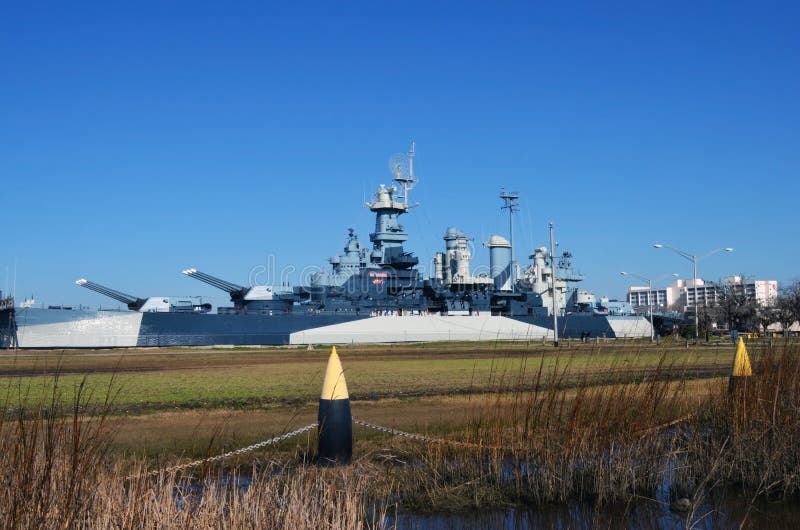


Anyone who hopes to make contact will need a general coverage short wave receiver, with both CW and SSB (Single Sideband) capabilities in the 7 and 14 MHz frequency ranges. The equipment will be in operation for the North Carolina QSO Party, scheduled for 26 February 2012, from noon to 10PM. Through a partnership with the Azalea Coast Amateur Radio Club (ACARC), the ship’s original transmitters, cabling, and antennas are used to transmit ham radio signals, under the call sign NI4BK. Behind her steel bulkheads looms another surprise: fully functioning radio equipment. Her distinctive camouflage paint scheme often surprises those who think of warships as monotone grey behemoths.

She seems to rise up out of the landscape of the trees and tall grass surrounding her on the Cape Fear River. North Carolina‘s visual appearance is unique amongst the remaining battleships. In 1986, the battleship was declared a National Historic Landmark. She was transferred to the state of North Carolina, towed to her present location on the Cape Fear River, and opened as a museum ship in October 1961, with a dedication following in April 1962. Commissioned in 1941, she was awarded 15 battle stars during World War II, and was decommissioned in 1947. Nestled in Wilmington, NC, is the battleship ex-USS North Carolina (BB 55), moored on the Cape Fear River. The age of the battleship has passed into history, but along the coasts of the United States are reminders of this dramatic era in naval history. Photo courtesy of the Battleship North Carolina. Port bow view of the Battleship North Carolina with dress ship flags flying.


 0 kommentar(er)
0 kommentar(er)
